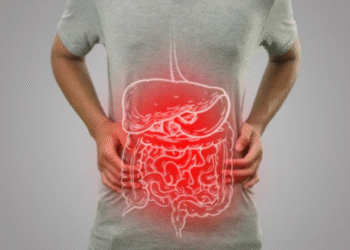1. Introduction to Seasonal Allergies
Seasonal allergies, also known as hay fever or allergic rhinitis, occur at specific times of the year when outdoor allergens like pollen are prevalent. These allergies can cause a range of symptoms that affect daily activities and overall well-being.
2. Common Triggers of Seasonal Allergies
The primary triggers of seasonal allergies include pollen from trees, grasses, and weeds, as well as mold spores. These allergens are more common during certain seasons, leading to an increase in allergic reactions.
3. Sneezing and Seasonal Allergies
Sneezing is one of the most common symptoms of seasonal allergies. It occurs when allergens irritate the nasal passages, causing the body to expel them forcefully. Frequent sneezing can be disruptive and uncomfortable.
4. Runny or Stuffy Nose
A runny or stuffy nose is another hallmark of seasonal allergies. Allergens cause the nasal membranes to produce excess mucus, leading to congestion or a runny nose, making breathing through the nose difficult.
5. Itchy Eyes
Itchy, watery eyes are a typical symptom of seasonal allergies. This occurs when allergens come into contact with the eyes, causing irritation and the release of histamines, which lead to itching and redness.
6. Watery Eyes and Tearing
Along with itching, eyes may become watery, leading to excessive tearing. This is a common response to allergens and can be particularly bothersome for those wearing contact lenses or engaging in outdoor activities.
7. Throat Irritation
Seasonal allergies can cause throat irritation or a scratchy feeling. Postnasal drip, where excess mucus runs down the back of the throat, often leads to this uncomfortable symptom.
8. Coughing
Coughing is a frequent symptom of seasonal allergies, often caused by postnasal drip. The presence of mucus in the throat can trigger a reflex to cough, which can be persistent and annoying.
9. Fatigue and Seasonal Allergies
Fatigue is a less obvious but common symptom of seasonal allergies. Constant sneezing, congestion, and difficulty breathing can lead to poor sleep quality, resulting in tiredness and lack of energy during the day.
10. Headaches and Sinus Pressure
Headaches and sinus pressure are common in individuals with seasonal allergies. Inflammation and congestion in the sinuses can cause pain and pressure in the forehead, cheeks, and around the eyes.
11. Itchy Skin
Some people with seasonal allergies may experience itchy skin or hives. This occurs when allergens trigger an immune response, leading to itching and the development of red, raised bumps on the skin.
12. Increased Asthma Symptoms
Seasonal allergies can exacerbate asthma symptoms, such as wheezing, shortness of breath, and chest tightness. Managing allergies is crucial for individuals with asthma to prevent severe flare-ups.
13. Swelling and Puffiness
Allergic reactions can cause swelling and puffiness, particularly around the eyes and face. This is due to the release of histamines, which increase blood flow and cause fluid accumulation in the tissues.
14. Ear Congestion and Discomfort
Ear congestion and discomfort can occur with seasonal allergies. The Eustachian tubes, which connect the ears to the throat, can become blocked due to nasal congestion, leading to pressure and pain in the ears.
15. Loss of Smell and Taste
Severe nasal congestion from seasonal allergies can temporarily impair the sense of smell and taste. This occurs because the nasal passages are blocked, preventing air from reaching the sensory receptors.
16. Irritability and Mood Changes
The persistent discomfort and lack of sleep caused by seasonal allergies can lead to irritability and mood changes. This can affect daily interactions and overall mental health.
17. Diagnosing Seasonal Allergies
Diagnosing seasonal allergies typically involves a visit to an allergist. They may conduct a skin prick test or blood test to identify specific allergens, helping to create an effective treatment plan.
18. Over-the-Counter Medications
Over-the-counter medications, such as antihistamines, decongestants, and nasal corticosteroids, can help manage seasonal allergy symptoms. These medications reduce inflammation and block histamines, providing relief from symptoms.
19. Prescription Treatments
For severe or persistent seasonal allergies, prescription treatments may be necessary. Options include stronger antihistamines, corticosteroids, and immunotherapy (allergy shots) to reduce sensitivity to allergens.
20. Natural Remedies for Relief
Natural remedies, such as saline nasal sprays, herbal teas, and essential oils, can provide relief from seasonal allergy symptoms. Always consult with a healthcare provider before starting any new treatment.
21. Lifestyle Changes to Reduce Exposure
Making lifestyle changes can help reduce exposure to allergens. This includes keeping windows closed during high pollen seasons, using air purifiers, and showering after spending time outdoors to remove pollen from hair and skin.
22. Importance of Hydration
Staying hydrated is important for managing seasonal allergies. Drinking plenty of water helps thin mucus, making it easier to expel and reducing congestion and postnasal drip.
23. Dietary Adjustments
Certain foods can help manage seasonal allergies. Anti-inflammatory foods, such as fruits, vegetables, and omega-3 fatty acids, can support the immune system and reduce allergic reactions.
24. Regular Cleaning and Dusting
Regular cleaning and dusting help minimize indoor allergens like dust mites and pet dander. Using a vacuum with a HEPA filter and washing bedding frequently can significantly reduce allergen levels in the home.
25. Seeking Professional Help
If seasonal allergies severely impact your quality of life, seeking professional help is important. An allergist can provide comprehensive care, including advanced treatments and personalized advice to manage and alleviate symptoms effectively.












